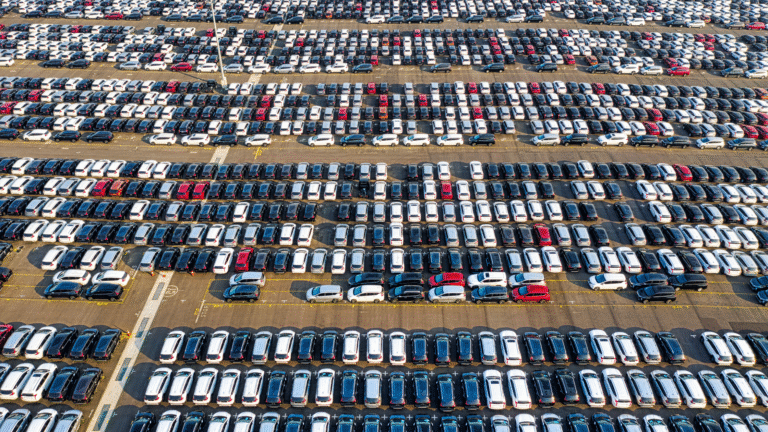Chinese electric vehicle (EV) manufacturers have been making serious inroads into the Australian car market. Brands like BYD, MG, and GWM are no longer fringe players—they’re on showroom floors, on city streets, and increasingly in Australian driveways.
But are these EVs delivering true value, or are we just swept up in the novelty of fresh options and aggressive pricing?
Let’s take a closer look at what’s driving this surge—and whether the hype matches the real-world performance, quality, and customer satisfaction.
Table of Contents
- Why Chinese EV Brands Are Gaining Ground
- Popular Chinese EV Models in Australia
- Pricing Advantage: Are They Really Cheaper?
- Quality, Safety & Tech Features: How They Stack Up
- The Warranty & Servicing Experience
- The Role of Perception: Trust, Bias & Branding
- What Aussie Buyers Are Saying
- Conclusion
- Meta Description
1. Why Chinese EV Brands Are Gaining Ground
China is the world’s largest EV market—and it’s years ahead in battery manufacturing, supply chain integration, and EV scaling. With massive production capacity and government support, Chinese automakers have rapidly moved from imitators to innovators.
In Australia, this has translated into:
- Attractive pricing compared to legacy brands
- Fast-tracked vehicle launches
- Growing dealership networks and support
- Keen focus on features, tech, and range
Many Chinese brands see Australia as a key test market ahead of expansion into Europe and North America.
2. Popular Chinese EV Models in Australia
Several models have made headlines and sales waves:
- BYD Atto 3: One of Australia’s best-selling EVs in 2024, known for solid range and quirky design.
- MG4 Electric: A hatchback EV priced to compete with combustion vehicles, offering excellent value for money.
- GWM Ora: Retro styling and a small footprint, positioned for urban drivers looking for personality and tech on a budget.
More models—including sedans, SUVs, and utes—are on the way.
3. Pricing Advantage: Are They Really Cheaper?
Chinese EVs often undercut competitors by $5,000–$15,000 for similar specs. They also tend to offer:
- More features as standard (e.g., panoramic sunroofs, advanced driver aids)
- Generous range for the price
- Lower upfront costs for first-time EV buyers
However, lower price doesn’t always mean better long-term value. Resale, servicing, and brand reputation can influence the full ownership cost.
4. Quality, Safety & Tech Features: How They Stack Up
Build quality for Chinese EVs has improved rapidly—but remains inconsistent across models and brands. Interior materials, panel gaps, and software polish can vary.
That said, many Chinese EVs boast:
- 5-star ANCAP safety ratings
- Advanced driver-assistance systems (ADAS)
- OTA (over-the-air) software updates
- Huge touchscreens and app integration
In some areas (like infotainment), they’re leading the pack. In others (such as software refinement), they’re catching up fast.
5. The Warranty & Servicing Experience
Warranty coverage is competitive, with some brands offering:
- 7 years/unlimited km warranties
- Battery warranties up to 8 years
- Low servicing costs compared to ICE vehicles
However, the servicing network and parts availability may not be as widespread or responsive as more established automakers—especially in rural areas.
6. The Role of Perception: Trust, Bias & Branding
Despite the value on offer, some Australian buyers remain hesitant. Reasons include:
- Concerns about long-term reliability
- Brand unfamiliarity
- Perceptions of Chinese quality based on past decades
That’s changing. BYD and MG have made major efforts to build brand trust through transparency, marketing, and delivery consistency.
7. What Aussie Buyers Are Saying
Reviews from early adopters of Chinese EVs are generally positive:
- Many praise value for money and features
- Some note minor fit-and-finish issues or quirks in software UX
- Most report satisfaction with range, charging, and daily usability
Buyers looking for performance or prestige still lean toward Tesla, Polestar, or Hyundai—but budget-conscious families and first-time EV drivers are embracing Chinese options.
8. Conclusion
So, is the rise of Chinese EV brands in Australia just hype? Not quite. The pricing, features, and rapid model rollout offer real value—especially for mainstream drivers looking to enter the EV market without breaking the bank.
While some brands still have ground to cover in long-term reliability and support infrastructure, the trajectory is clear: Chinese EVs are here to stay, and they’re reshaping what value looks like in Australia’s rapidly evolving car market.
9. Meta Description
Chinese EV brands are taking off in Australia—but are they worth the hype? We explore value, reliability, safety, and what Aussie drivers really think.
Ask ChatGPT
